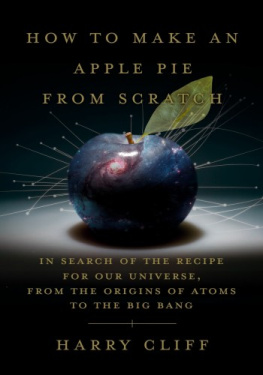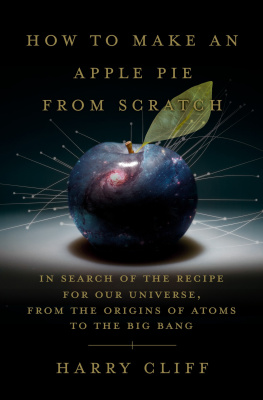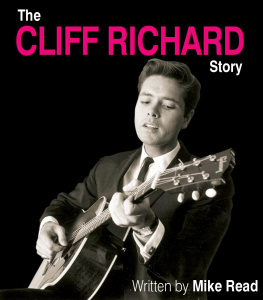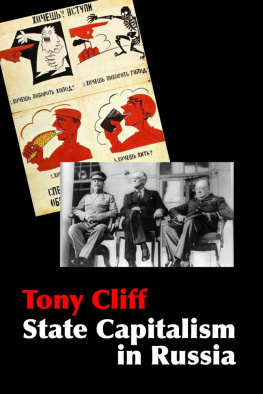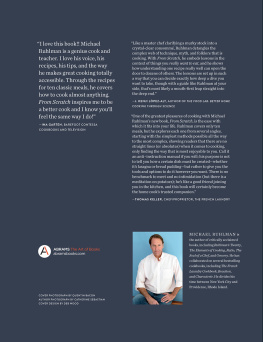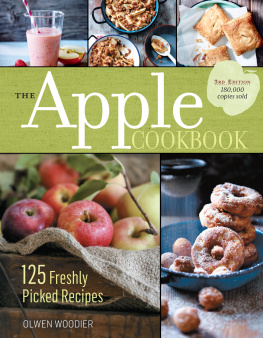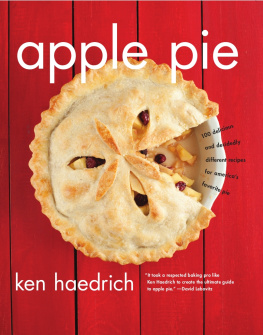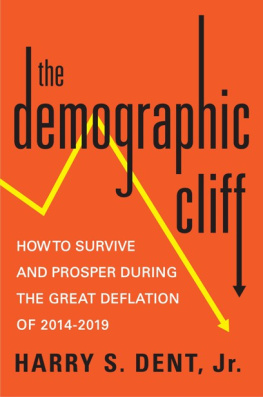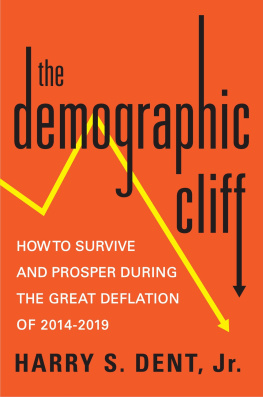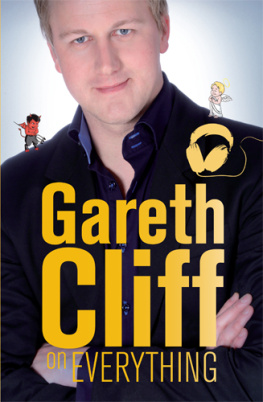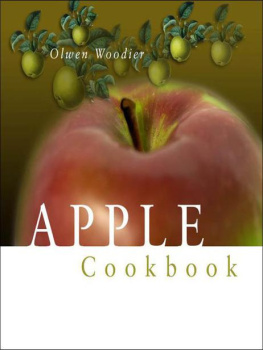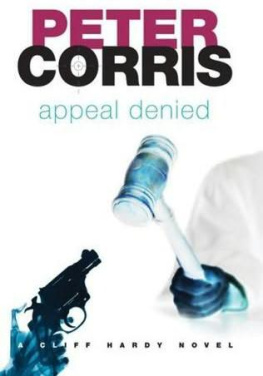Harry Cliff - How to Make an Apple Pie from Scratch
Here you can read online Harry Cliff - How to Make an Apple Pie from Scratch full text of the book (entire story) in english for free. Download pdf and epub, get meaning, cover and reviews about this ebook. year: 2021, genre: Non-fiction. Description of the work, (preface) as well as reviews are available. Best literature library LitArk.com created for fans of good reading and offers a wide selection of genres:
Romance novel
Science fiction
Adventure
Detective
Science
History
Home and family
Prose
Art
Politics
Computer
Non-fiction
Religion
Business
Children
Humor
Choose a favorite category and find really read worthwhile books. Enjoy immersion in the world of imagination, feel the emotions of the characters or learn something new for yourself, make an fascinating discovery.
- Book:How to Make an Apple Pie from Scratch
- Author:
- Genre:
- Year:2021
- Rating:3 / 5
- Favourites:Add to favourites
- Your mark:
- 60
- 1
- 2
- 3
- 4
- 5
How to Make an Apple Pie from Scratch: summary, description and annotation
We offer to read an annotation, description, summary or preface (depends on what the author of the book "How to Make an Apple Pie from Scratch" wrote himself). If you haven't found the necessary information about the book — write in the comments, we will try to find it.
Harry Cliff: author's other books
Who wrote How to Make an Apple Pie from Scratch? Find out the surname, the name of the author of the book and a list of all author's works by series.
How to Make an Apple Pie from Scratch — read online for free the complete book (whole text) full work
Below is the text of the book, divided by pages. System saving the place of the last page read, allows you to conveniently read the book "How to Make an Apple Pie from Scratch" online for free, without having to search again every time where you left off. Put a bookmark, and you can go to the page where you finished reading at any time.
Font size:
Interval:
Bookmark:


Copyright 2021 by Harry Cliff
All rights reserved. Published in the United States by Doubleday, a division of Penguin Random House LLC, New York, and distributed in Canada by Penguin Random House Canada Limited, Toronto.
www.doubleday.com
DOUBLEDAY and the portrayal of an anchor with a dolphin are registered trademarks of Penguin Random House LLC.
Illustration credits: Mel Northover
Cover images: (apple) Alexander Maksimenko; (leaf) arda savasciogullari; (particles collision) vchal; (stellar nursery) NASA; all Shutterstock
Cover design by Michael J. Windsor
Library of Congress Cataloging-in-Publication Data
Names: Cliff, Harry (Harry Victor), author.
Title: How to make an apple pie from scratch : in search of the recipe for our universe-from the origins of atoms to the big bang / Harry Cliff.
Description: New York : Doubleday, [2021] | Includes bibliographical references.
Identifiers: LCCN 2020047429 (print) | LCCN 2020047430 (ebook) | ISBN 9780385545655 (hardcover) | ISBN 9780385545662 (ebook)
Subjects: LCSH: Particles (Nuclear physics)Popular works.
Classification: LCC QC793.26 .C57 2021 (print) | LCC QC793.26 (ebook) | DDC 523.01/97dc23
LC record available at https://lccn.loc.gov/2020047429
LC ebook record available at https://lccn.loc.gov/2020047430
Ebook ISBN9780385545662
ep_prh_5.7.1_c0_r0
For Vicky and Robert. Thank you.
If you wish to make an apple pie from scratch, you must first invent the universe.Carl Sagan
Contents
Prologue
O n a frosty morning in March 2010 I pulled up outside a fenced compound on the outskirts of the French commune of Ferney-Voltaire. A sign bolted to the steel security gates announced
CERN SITE 8ACCS RSERV AUX PERSONNES AUTORISESLeaning awkwardly across to reach through the passenger window of my right-hand-drive car, I swiped my security badge against the reader. The gates remained closed. Hmmmhad my access request not gone through? Noticing a queue of cars beginning to form behind me, I gave the reader a series of increasingly anxious swipes. Nothing. I was just about to get out to attempt to negotiate with the security guard in my halting high-school French when, to my relief, the gates began to creak open.
I parked behind the main experimental hall, facing the chain-link fence that marks the boundary of Geneva Airports runway. Outside, my breath misted in the cold air, which carried a now familiar sickly sweet smell from a perfume factory in the nearby Swiss town of Meyrin. Pushing my hands into my coat pockets I made for the prosaically named Building 3894, a single-story portacabin used for the early morning run meetings.
Inside, most of the participants were already crowded around the long table waiting for the meeting to start. Some chatted with their neighbors in English, French, German, Italian; others sipped coffees or sat hunched over laptops. I took my seat a row back from the table itself, hoping that I wouldnt be called upon.
A hundred meters beneath our feet in a concrete tunnel so long it could encircle a city, the largest and most powerful machine ever built was being coaxed into life: the Large Hadron Collider (LHC). In just a few days, this ring-shaped particle accelerator would slam subatomic particles into one another with such incredible violence that it would briefly recreate conditions that existed during the first instant after the big bang.
These tiny cataclysms would be recorded by four giant particle detectors, housed in cathedral-sized underground caverns, spaced several kilometers apart around the LHC ring. One of these detectors was directly below usthe Large Hadron Collider beauty (LHCb) experiment6,000 tons of steel, iron, aluminum, silicon, and fiber-optic cables, poised like a sprinter in the blocks, waiting for its moment to arrive.
It had been a long wait. Some of my colleagues had spent their entire careers building toward this moment. Twenty years of planning, funding bids, scrupulous design, testing, and engineering had resulted in one of the most advanced particle detectors ever built. In the next few days all that work would finally be put to the test, as engineers on the LHC prepared to collide particles inside the detector for the first time.
I was twenty-four years old, a second-year PhD student, having arrived in Geneva for the first of two three-month stints a few weeks earlier. My new home was CERN, the European Organization for Nuclear Research, the largest and most advanced particle physics lab in the world. Over the past few weeks I had slowly learned to find my way around the labyrinth of office buildings, workshops, and laboratories that make up the sprawling CERN site, battled through February snowstorms, and discovered that flushing your toilet after ten p.m. in Switzerland will get you a stern telling-off from your neighbors. I was also coming to grips with my new duties on LHCb, including responsibility for one of its numerous subsystems, each of which would have to function flawlessly. If one failed, then the long-awaited data could end up being unusable.
I had first come face-to-face with LHCb a year and a half earlier. My supervisor, Uli, a German postdoctoral researcher who was based at CERN full-time, had guided me through the complex set of procedures required to access the detector. Donning a badge that would monitor my radiation exposure during my trip below ground, I first had to persuade a rather temperamental iris-scanner to let me through a set of bright green, airlock-style security doors. Then a small metal lift shuddered its way 105 meters beneath the earth, down into what is rather ominously known as the pit.
The doors opened on a strange subterranean world of whirring machinery, metal gantries painted in primary colors, and concrete tunnels threaded with miles of cables and ducts. Another set of security doors, this time bright yellow and emblazoned with radiation warning signs, and then a narrow passage snaking its way through a 12-meter-thick shield wall before abruptly opening into a soaring concrete cavern.
The first thing that strikes you is its sheer size. LHCb is big: 10 meters high and 21 meters long, spanning the entire width of the cavern. At first glance it can be hard to figure out what youre looking at; the view is dominated by staircases, steel platforms, and scaffolding, painted in green and yellow, whose job is to support and allow access to the sensitive elements of the detector, which are mostly hidden from view. Crisscrossing the walls of the cavern are reams of cables taking power to the detector and carrying away the torrent of data produced by millions of tiny, precision-engineered sensors. LHCb is capable of measuring the paths of thousands of individual subatomic particles as they tear out from the collisions at a whisker below the speed of light with a precision of a few thousandths of a millimeter. And it can do this a million times every second.
But perhaps the most remarkable thing about LHCb is the way it was built. Like all four of the large LHC experiments, it is a modern-day Tower of Babel, with each component designed and assembled by an international collaboration of physicists and engineers based at dozens of universities spread across the globe, from Rio de Janeiro to Novosibirsk. Brought together in this giant hole in the ground just outside Geneva they form a single, mind-meltingly complex instrument. The fact that any of this works at all still seems kind of miraculous to me.
Next pageFont size:
Interval:
Bookmark:
Similar books «How to Make an Apple Pie from Scratch»
Look at similar books to How to Make an Apple Pie from Scratch. We have selected literature similar in name and meaning in the hope of providing readers with more options to find new, interesting, not yet read works.
Discussion, reviews of the book How to Make an Apple Pie from Scratch and just readers' own opinions. Leave your comments, write what you think about the work, its meaning or the main characters. Specify what exactly you liked and what you didn't like, and why you think so.

